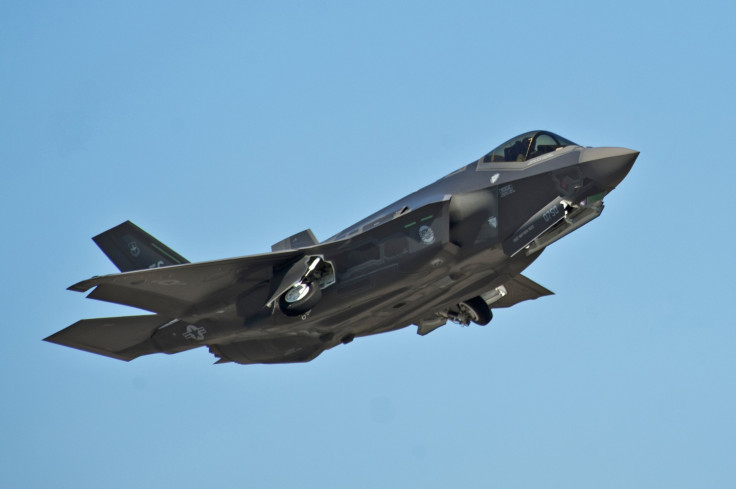US CENTCOM Deploys F-35s, Navy Destroyer To Safeguard Vital Waterways Amid Rising Tensions

KEY POINTS
- Deputy Pentagon Press Secretary Sabrina Singh made an announcement regarding the deployment
- The USS Thomas Hudner destroyer, along with F-35 fighters and F-16 fighters, will be dispatched to the region
- This deployment aims to enhance the security and surveillance capabilities in the CENTCOM area
In response to Iran's recent seizure and harassment of commercial shipping vessels, the US Central Command in the Middle East is taking action by deploying a range of military assets. This includes dispatching F-35 stealth fighter aircraft, a Navy destroyer, and F-16s to monitor and safeguard crucial waterways in the region. The deployment aims to ensure the safety and security of commercial shipping in the area.
Following the arrival of stealth F-22s in Jordan from Europe, as part of a temporary rotation to deter Russian pilots' maneuvers in the region, the deployment of F-35s has been initiated. These advanced fighter aircraft are being sent as an additional measure to bolster the deterrence efforts in response to the perceived threat posed by Russian activities.
On July 17, during a Pentagon briefing, Deputy Pentagon Press Secretary Sabrina Singh made an announcement regarding the deployment of military assets to the US Central Command (CENTCOM) area of responsibility. As per the direction of the secretary of defense, the USS Thomas Hudner destroyer, along with F-35 and F-16 fighters, will be dispatched to the region. This deployment aims to enhance the security and surveillance capabilities in the CENTCOM area, indicating the US government's commitment to safeguarding the region's stability and interests.
US Defense Secretary has ordered F-35 and F-16 fighter jets deployed to Mideast as well as the destroyer USS Thomas Hudner "in response to a number of recent alarming events in Strait of Hormuz", after Iran's Navy attempted to seize merchant vessels twice earlier this month. pic.twitter.com/kMbunolDAs
— Iran International English (@IranIntl_En) July 18, 2023
The recent decision to deploy the USS Thomas Hudner destroyer, along with F-35 and F-16 fighters, to the CENTCOM area of responsibility is a direct response to concerning events that have unfolded in the Strait of Hormuz.
The Strait of Hormuz holds immense strategic importance as a vital narrow passage that connects the Persian Gulf and the Gulf of Oman. Its significance lies in facilitating the transit of around 20 percent of the world's total oil supply. This crucial waterway serves as a major artery for the global energy trade, enabling the transportation of oil from the oil-rich countries in the Persian Gulf to various international markets. The stability and openness of the Strait are critical factors that influence the global energy landscape and have substantial implications for both regional and global economies.
The Defense Department adopts a fluid and adaptable approach to its posture, regularly making necessary adjustments to address both present and future operational demands, as reported by Eurasian Times.
During the briefing, Singh provided an explanation for the decision to deploy additional assets to the region. Citing the continuous incidents of vessel harassment by Iran in the Strait of Hormuz, the Secretary of Defense and CENTCOM commander have jointly decided to enhance the capabilities in the area. By increasing their presence and readiness, the authorities aim to safeguard maritime security and stability in the vital Strait of Hormuz.
Although the deployment of F-35s and a Navy destroyer marks a recent development, plans to reinforce the military's presence in the region were disclosed earlier on July 14. A senior US defense official revealed the intention to deploy additional F-16s as part of these augmentation efforts. By increasing the deployment of F-16 fighter aircraft, the US aims to further strengthen its capabilities in the region, responding to the evolving security situation and maintaining a robust posture to address potential threats and challenges effectively.
© Copyright IBTimes 2024. All rights reserved.




















